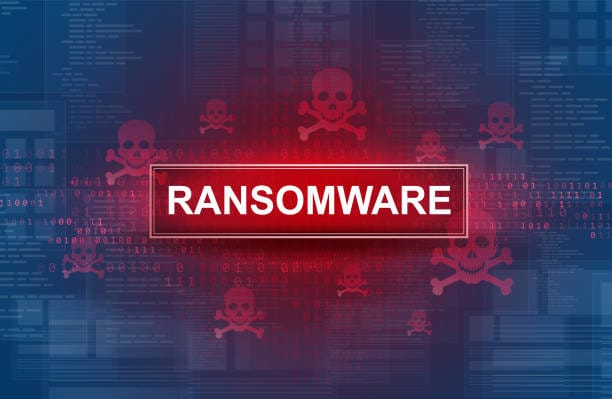The Weekend Nobody Rested: October 4-5 Cybersecurity Reality Check

Your weekend intelligence briefing from someone who spent 48 hours watching the threat landscape evolve
TL;DR: While most people enjoyed their weekend, IT security teams dealt with ongoing ransomware campaigns, data breach notifications, and the reality that cyber threats don't take days off. Here's what October 4-5, 2025, revealed about enterprise cybersecurity.
Saturday's Sobering Reality: When Construction Meets Ransomware
Let me start with what caught my attention Saturday morning: Systems Pavers, a construction company based in Santa Ana, notified individuals of a data breach following a ransomware attack. According to their disclosure, threat actors gained unauthorized access to data between September 20 and October 4.
Why This Matters:
I can tell you that this industry is increasingly targeted because it handles valuable data—project plans, client information, financial records, and proprietary designs—while often lacking the cybersecurity budgets of larger enterprises.
The Medusa ransomware gang claimed responsibility and gave the organization a one-week deadline to pay a $1 million ransom demand. That's not a typo—one million dollars from a construction company.
The Weekend Timeline That Should Concern Everyone:
The attack window from September 20 to October 4 means attackers had two weeks inside the network before being detected. That's 14 days to map systems, identify valuable data, and execute their exfiltration strategy.
The Healthcare Weekend: When Patient Data Becomes Currency
Saturday also brought news about healthcare facility management company HCF Management, which reportedly fell victim to a ransomware attack and has had its data leaked on the dark web.
The Numbers That Tell the Story:
According to reports, the attackers claimed to have exfiltrated 250GB of files. Since January 9th, 23 HCF facilities have filed reports with the Department of Health and Human Services, indicating that at least 70,089 patients have been impacted by the breach.
Let that sink in: over 70,000 patients' healthcare information potentially compromised.
What This Weekend Revealed About Healthcare Security:
As someone who's implemented security systems for small healthcare environments, I can tell you that healthcare remains one of the most targeted sectors because:
- Patient data has high black market value
- Healthcare systems can't afford extended downtime
- Compliance violations carry massive fines
- Organizations often prioritize patient care over IT security budgets
Sunday's Lessons: The Patterns Nobody Wants to See
As the weekend progressed, a clear pattern emerged from multiple incidents: attackers systematically target mid-sized organizations across diverse industries.
The Weekend Victim Profile:
- Construction companies with valuable project data
- Healthcare facilities with protected health information
- School districts with student records
- Local governments with constituent data
- Manufacturing facilities with proprietary designs
What These Targets Have in Common:
- Limited cybersecurity budgets - Not Fortune 500 resources
- High-value data - Information worth stealing or encrypting
- Operational urgency - Can't afford extended downtime
- Compliance pressure - Face regulatory reporting requirements
- Insurance coverage - Often have cyber insurance that might pay
The Weekend Forensics: What Investigation Teams Discovered
Based on incident response work this weekend, here's what forensic teams were finding:
Discovery 1: Extended Dwell Times
Attackers are spending weeks inside networks before striking. The Systems Pavers case showed 15 days from initial access to detection. That's plenty of time to:
- Map the entire network
- Identify backup systems
- Locate the most valuable data
- Test exfiltration methods
- Plan the attack timing
Discovery 2: Multi-Stage Extortion
Modern ransomware operations don't just encrypt—they steal data first, then threaten to:
- Leak the data publicly
- Sell it to competitors
- Report HIPAA/GDPR violations
- Notify affected customers directly
This multi-pronged pressure makes payment more likely.
Discovery 3: Targeted Industry Knowledge
The attackers demonstrate a clear understanding of their targets:
- Healthcare attackers know HIPAA deadlines
- Construction attackers understand that project delays cost money
- School district attackers know budget cycles
- They time attacks to maximize pressure
What Saturday and Sunday Taught About 2025 Threats
This weekend crystallized several uncomfortable truths about where we are in October 2025:
Truth 1: Mid-Market Is the New Target
The weekend's incidents show attackers have shifted focus to mid-sized organizations. These companies have valuable data and revenue but lack enterprise-level security teams, which is the sweet spot for ransomware economics.
Truth 2: Weekends Are Prime Attack Time
Organizations discovered compromises over the weekend, when security teams were minimal, response times were slower, and pressure to pay increased before Monday's business operations resumed.
Truth 3: Data Theft Now Exceeds Encryption
The focus has shifted from encrypting systems to stealing data. Why risk detection with encryption when stolen data alone provides sufficient extortion leverage?
Truth 4: Attack Windows Are Measured in Weeks
Gone are the days of smash-and-grab attacks. Modern operators spend weeks doing reconnaissance, making detection and response during this dwell time the critical battleground.
Truth 5: Ransom Demands Are Industry-Calibrated
A $1 million demand for a construction company and $180,000 for a healthcare center aren't random numbers. Attackers research their targets' revenue, insurance coverage, and risk tolerance.
The Monday Morning Reality Check
As this weekend ends, here's what Monday morning looks like across affected industries:
For Organizations Disclosed This Weekend:
- Emergency board meetings about ransom payment decisions
- Legal teams assessing notification requirements
- PR firms preparing breach disclosure statements
- Cyber insurance carriers are evaluating claims
- Customers and partners are demanding security assurances
For Everyone Else:
- Reviewing weekend security monitoring logs
- Testing incident response procedures
- Auditing backup isolation and recovery capabilities
- Assessing vulnerability to similar attack patterns
- Updating risk assessments for board presentations
Insight 1: Detection Lag Is the Critical Problem
The 15-day window from breach to detection in the Systems Pavers case is unacceptable. Organizations need:
- Real-time monitoring of authentication patterns
- Anomaly detection on data access
- Behavioral analytics on user accounts
- Automated alerting on suspicious activity
Insight 2: Weekend Response Capability Matters
Every organization I spoke with this weekend struggled with:
- Reaching key decision-makers
- Activating forensic vendors
- Coordinating legal counsel
- Communicating with stakeholders
You're vulnerable if your incident response plan requires business hours to execute.
Insight 3: Backup Strategies Are Tested During Attacks
Organizations with immutable, isolated backups could recover. Those with backups accessible through compromised credentials faced impossible choices. Your backup strategy is only as good as your last restore test.
Insight 4: Cyber Insurance Doesn't Equal Security
Multiple organizations this weekend had cyber insurance but inadequate security. Insurance pays for breach response—it doesn't prevent breaches. The deductibles and premium increases after claims can exceed the direct attack costs.
Insight 5: Ransom Payment Isn't the End
Organizations considering payment face:
- No guarantee of data deletion
- Potential for repeat extortion
- Regulatory scrutiny of payments
- Possible criminal investigation
- Reputational damage regardless
The Questions Your Board Will Ask Monday
Based on weekend conversations, here are the questions coming Monday morning:
Question 1: "How would we know if we're compromised?" You have a visibility gap if you can't answer with specific monitoring capabilities and detection timeframes.
Question 2: "What's our mean time to detect and respond?" If it's measured in weeks rather than hours, you're vulnerable to the attack patterns we saw this weekend.
Question 3: "Can we recover without paying ransom?" This depends entirely on your backup strategy, isolation procedures, and tested recovery capabilities.
Question 4: "What does this mean for our cyber insurance?" Premiums are rising, coverage is tightening, and insurers demand specific security controls as prerequisites.
Question 5: "Are we a target?" If you have revenue, data, and systems that matter to operations, you're a target. The question is whether you're a vulnerable one.
The Bottom Line: Weekends Matter Now
This October 4-5 weekend wasn't unusual—typical of the current threat landscape. While organizations closed for the weekend, threat actors continued operations, incident responders worked around the clock, and the cybersecurity industry collectively dealt with the reality that threats don't respect weekends, holidays, or business hours.
The New Normal:
- Ransomware attacks targeting mid-market organizations
- Data theft is the primary extortion lever
- Multi-week dwell times before detection
- Industry-specific ransom calculations
- Weekend timing to maximize pressure
- Healthcare, construction, education, and manufacturing are all equally vulnerable
References
- BlackFog. "The State of Ransomware 2025." 2025. https://www.blackfog.com/the-state-of-ransomware-2025/
- Tech.co. "Data Breaches That Have Happened This Year (2025 Update)." October 2025. https://tech.co/news/data-breaches-updated-list
- Secureframe. "20 Recent Cyber Attacks & What They Tell Us About the Future of Cybersecurity." July 2025. https://secureframe.com/blog/recent-cyber-attacks
- CM Alliance. "Sept 2025: Biggest Cyber Attacks, Ransomware Attacks and Data Breaches." September 2025. https://www.cm-alliance.com/cybersecurity-blog/sept-2025-biggest-cyber-attacks-ransomware-attacks-and-data-breaches
- KonBriefing. "Cyber attacks USA 2025, 2024." 2025. https://konbriefing.com/en-topics/cyber-attacks-usa.html


